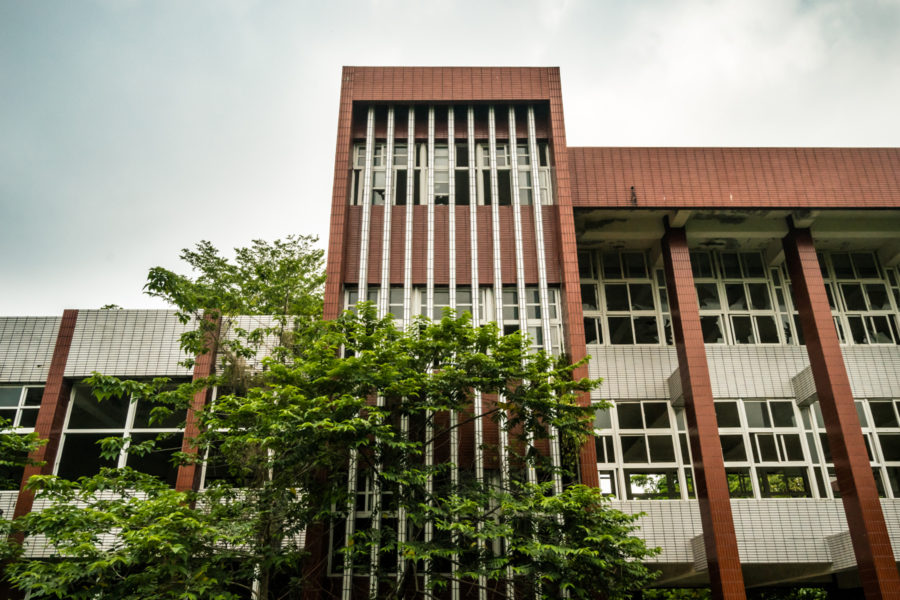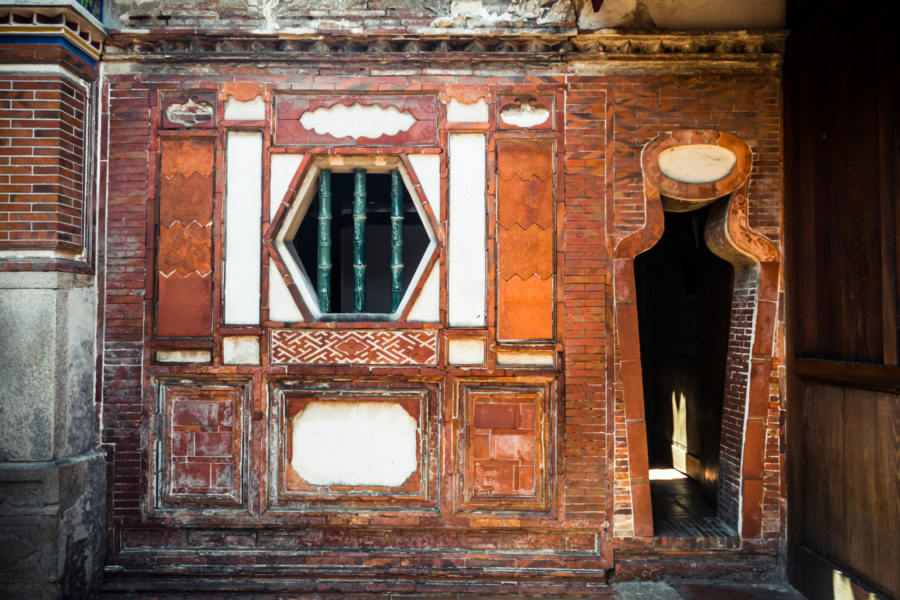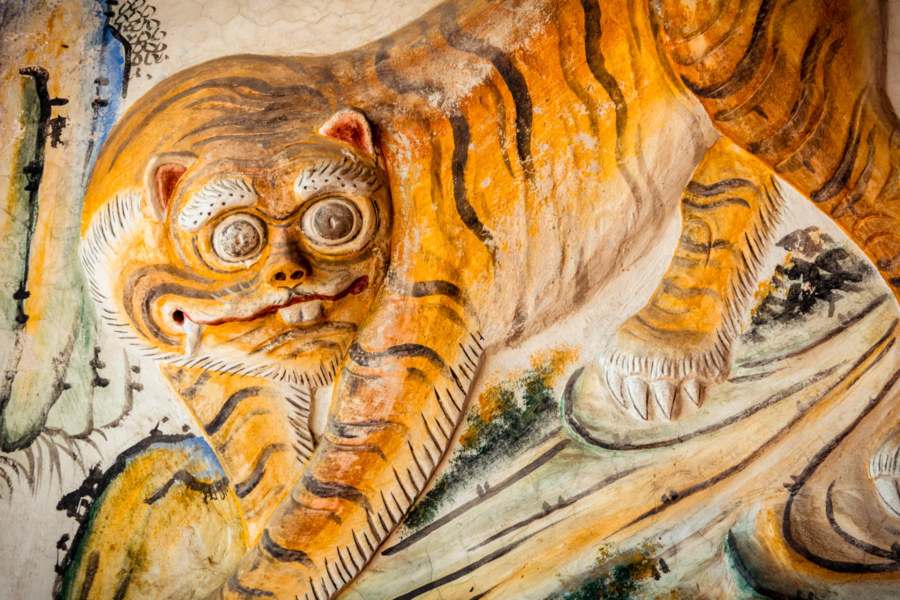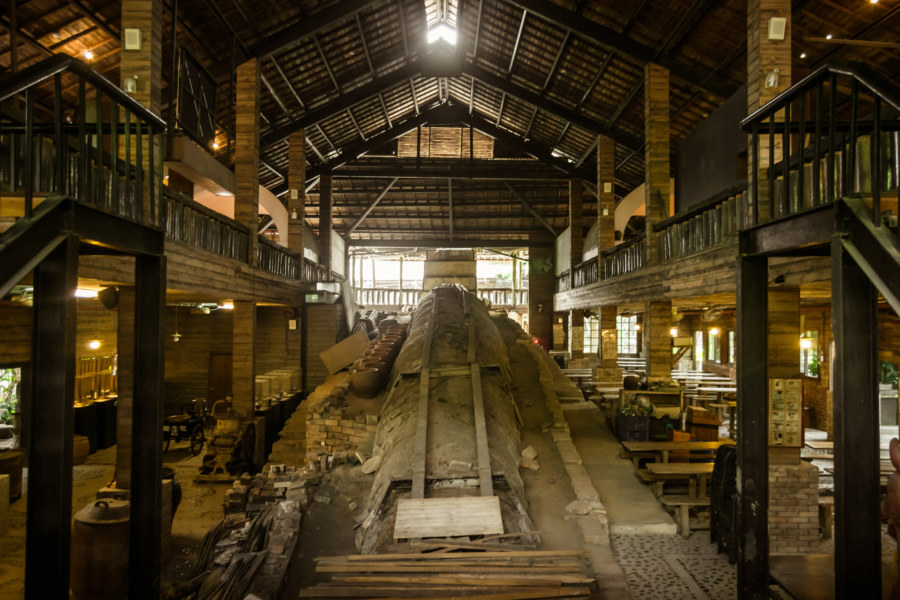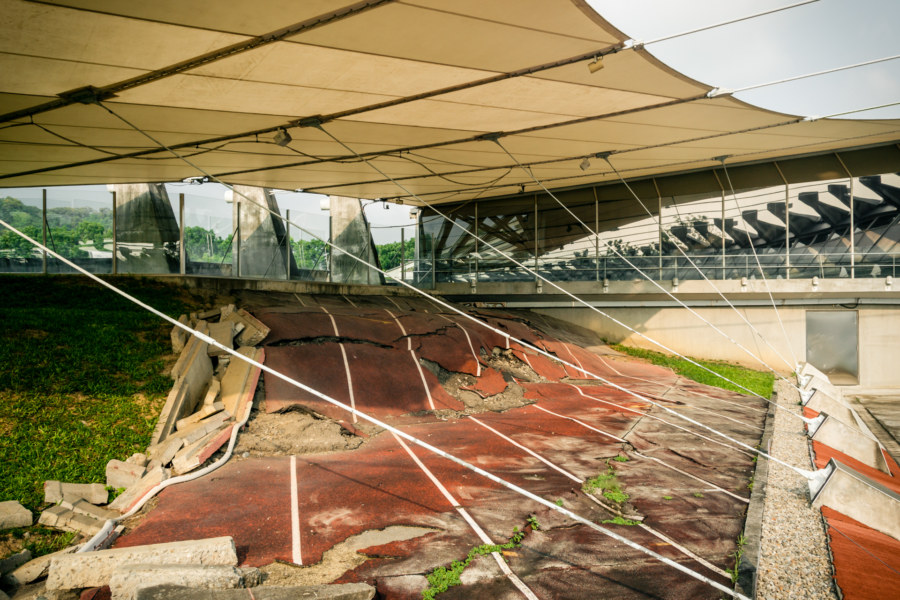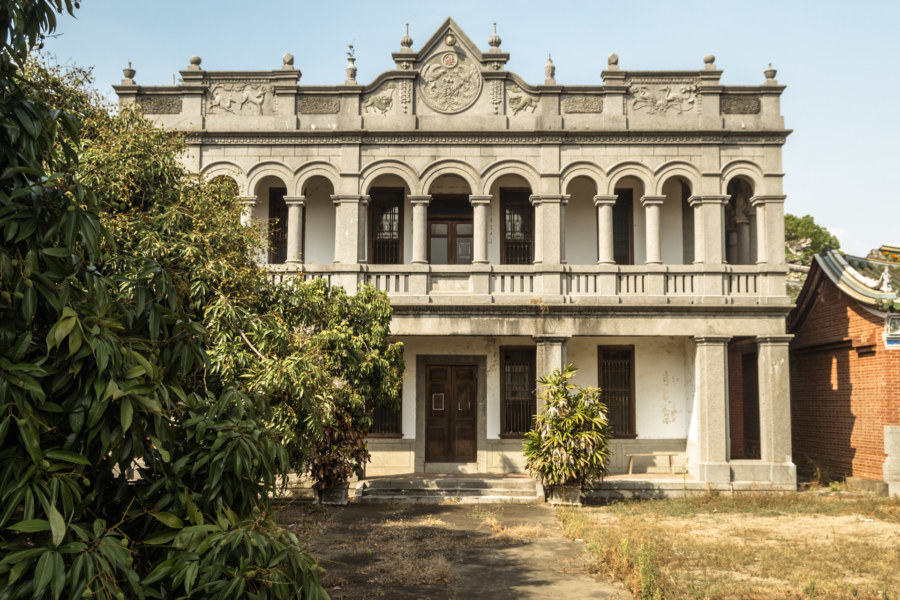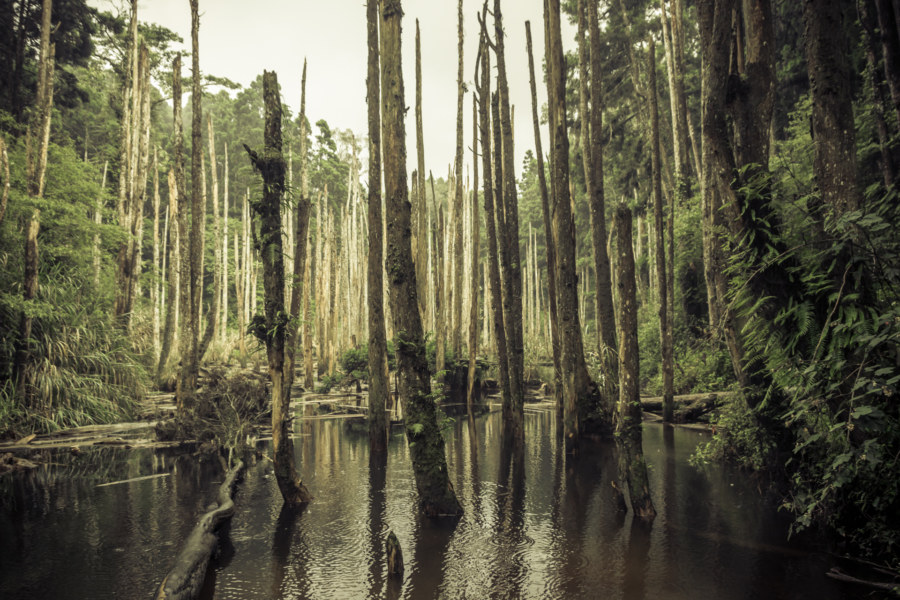Yìxīn Vocational High School (益新工商職業學校) is a relatively obscure but not entirely unknown ruin in central Taiwan. Located along the main road running through Linnei, Yunlin, it seems to have been abandoned in the aftermath of the devastating 921 Earthquake, nearly two decades ago. Many schools were destroyed in the quake and scores more were condemned (most famously an entire university campus in Dongshi) but whether this particular school suffered the same fate isn’t certain.
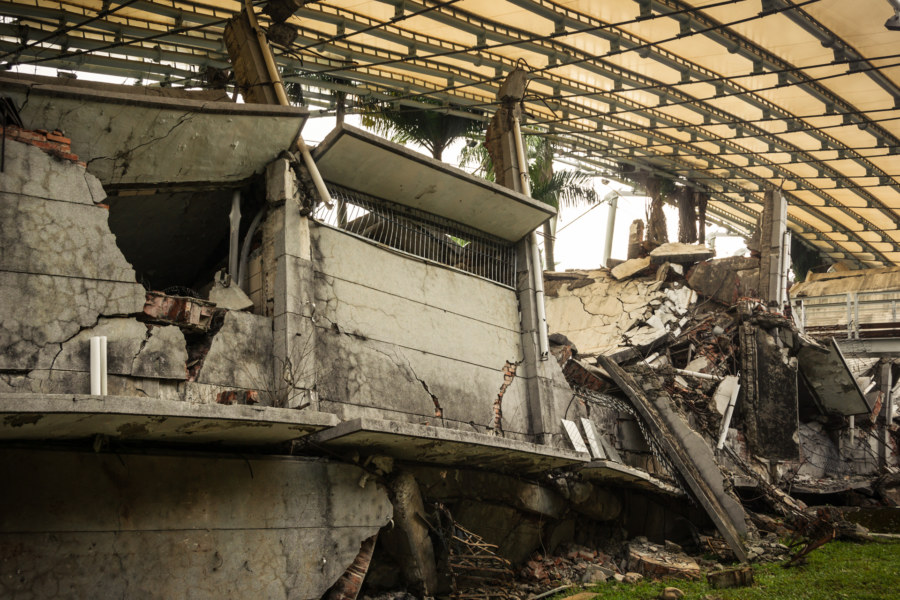
The catastrophic 921 Earthquake (九二一大地震) struck Taiwan in the middle of the night on September 21st, 1999, killing and injuring thousands, destroying innumerable buildings, and reshaping entire landscapes. Emanating from an epicenter on the Chelungpu Fault (車籠埔斷層) in Jiji, Nantou, its effects were felt all around central Taiwan. Numerous memorials and reminders of the disaster remain, many of which have been documented here.
Huangxi Academy 磺溪書院
Built in 1887, Huángxī Academy 磺溪書院 is one of dozens of Qing dynasty era schools of classical studies in Taiwan. Located in Dadu, a small town in southwestern Taichung, it provides a window into a time when scholarship was more closely interwoven with spirituality. Apart from classrooms and areas for quiet study the academy also has an altar to the Five Wénchāng 五文昌: Kuí Xīng 魁星, Zhū Xī 朱熹, Guān Yǔ 關羽, Lǚ Dòngbīn 呂洞賓, and, of course, Wénchāng 文昌 himself. Collectively these Taoist gods represent classical Chinese culture and several are commonly venerated by students prior to writing exams. Structurally the academy follows a plan similar to a traditional Taiwanese courtyard home or sanheyuan with the addition of a large gatehouse and pavilion.
Daodong Academy 道東書院
Dàodōng Academy (道東書院) is one of many Qing dynasty era academies scattered across central and southern Taiwan. Located in Hemei in Changhua, it was built in 1857, the 7th year of the Xianfeng Emperor (清咸豐七年), and operated as a private school devoted to classic Chinese literature, philosophy, and ethics, among other subjects. Commonly known to locals as Wénmiào (文廟, “Temple of Literature”), the academy also venerates Song dynasty scholar Zhū Xī (朱熹) and Kuí Xīng (奎星), the god of examinations.
Shuili Snake Kiln 水里蛇窯
The Shuili Snake Kiln 水里蛇窯 is a wood-fired pottery kiln on the outskirts of Shuili, Nantou. The name is derived from the kiln’s serpentine shape, though to my eyes it looks more like a slug than a snake. Founded in 1927 by master potter Lín Jiāngsōng 林江松, it remained a family business for generations before being opened to the public as a “ceramics park” in 1993.
921 Earthquake Museum 九二一地震教育園區
Deep in the night on September 21st, 1999, the devastating 921 Earthquake ripped through central Taiwan. Thousands were killed, hundreds of buildings collapsed, and entire towns were leveled to the ground, particularly in Nantou and Taichung. Nowadays there are many reminders and memorials to the disaster scattered across the region, among them the 921 Earthquake Museum 九二一地震教育園區 (Chinese version; official site) in Wufeng, which I visited in June 2014.
Yumei Hall 玉美堂
Yùměi Hall 玉美堂, also known as known as Hóng Family Mansion 洪氏洋樓, is located in Jiālǎo Village 茄荖村, a small settlement on the eastern edge of Fenyuan in Changhua, Taiwan. Built in the late 1920s when the village was administered as part of Caotun in Nantou, it is one of only a handful of “Western-style” country manors built in central Taiwan during the Japanese colonial period (see my post about Jùkuíjū 聚奎居 for another great example).
Nantou’s Misty Lotus Forest 忘憂森林
Collected here are a series of dreamlike photos from a road trip into the misty mountains of Lugu in Nantou, central Taiwan. I undertook this trip with a friend in July 2014. Our goal was the Lotus Forest 忘憂森林 (pinyin: Wàngyōu Sēnlín), also known as the Misty Forest 迷霧森林, a high mountain bog formed in the aftermath of the catastrophic 921 earthquake when a landslide altered drainage patterns, forming a small lake and drowning part of the existing forest. At an elevation somewhere close to 2,000 meters, the Lotus Forest is often shrouded in thick fog, imbuing it with an eerie mystique that attracts Taiwanese people from all over the island.
